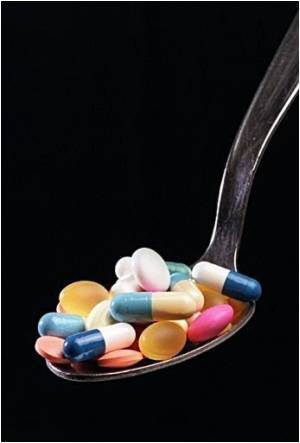Aggressive marketing of drugs could harm patients, a new study shows.

He is the co-author of a paper published online in the American Journal of Public Health, exploring recent withdrawals of blockbuster drugs due to safety concerns. The paper finds a clear pattern of physician-focused marketing tactics that ultimately exposed patients to a worsening benefit-to-harm ratio. Potential patient safety and public health implications include unnecessary exposure to adverse side effects, high medical costs and competition for scarce resources.
“This is not a random occurrence, but rather a repeating, planned scenario in which drugs, discovered with good science for a specific set of patients, are marketed to a larger population as necessary, beneficial and safer than other alternatives,” said Dr. Howard Brody and co-author Donald W. Light, a professor at the University of Medicine and Dentistry of New Jersey .
Drugs that pharmaceutical companies market most aggressively to physicians and patients tend to offer less benefit and more harm to most patients, they say and describe the phenomenon as the “inverse benefit law.”
The examples they cite include -
Guidelines that reduce diagnostic thresholds and rely on surrogate endpoints — as seen in the steady lowering of blood glucose levels at which diabetes should be diagnosed to support glitazone drugs. Or relying on statins to lower cholesterol versus having a proven impact on the hard endpoint of decreasing heart disease incidence.
Advertisement
“Disease mongering” — Osteopenia, once considered a non-disease state in patients who had not lost enough bone density to be diagnosed with osteoporosis, has now turned into a disease itself, in hopes of convincing physicians and patients that biphosphonate drug treatment will prevent their “disease” from progressing.
Advertisement
“While we looked only at marketing directed toward physicians, direct-to-consumer advertising plays a critical role in driving demand for a drug by patients who fall outside the group that might truly need it, and pressuring physicians to prescribe it more readily,” said Brody. “European countries are now debating whether to join the U.S. and New Zealand in allowing DTC advertising and we hope that our work could help inform that discussion.”
Brody and Light recommend a series of remedial actions, including: restrict writing usage guidelines to groups free of commercial conflicts of interest; independently fund and design trials focused on safety and efficacy; and create a neutral agency (e.g., a branch of the National Institutes for Health) to conduct drug trials, including comparative effectiveness research to improve evidence-based prescribing.
The authors point to recent efforts such as the National Physicians Alliance’s Unbranded Doctor Campaign and The Physician Payment Sunshine Act as positive steps toward a safe marketplace where physicians and patients access valuable, effective drugs.
“There is an unintended, but direct conflict between pharmaceutical marketing and public health,” said Brody. “Physicians should approach commercial marketing by pharmaceutical companies with a critical eye. Future reform polices should look to reduce, minimize and limit these practices. Patients can also play an important role by being more skeptical of drug ads and remember, the most important directive in them is to ‘talk to your doctor’.”
Source-Medindia









